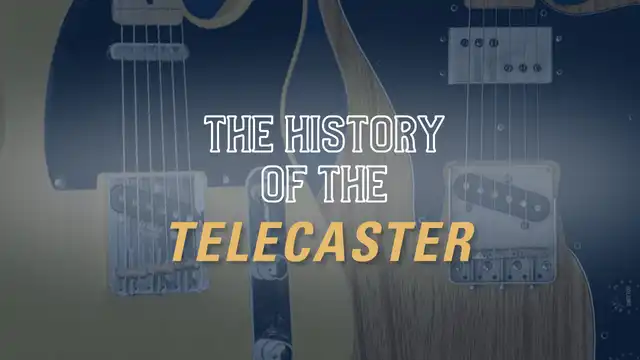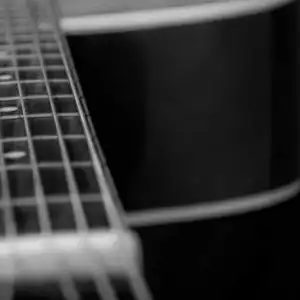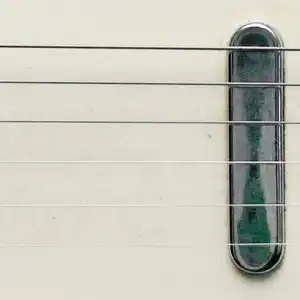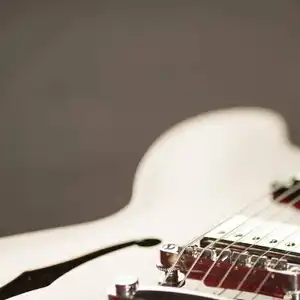History of the Fender Telecaster


The electric guitar’s modern identity wouldn’t exist without the Fender Telecaster. As the first mass-produced solid-body electric, it set the standard for tone, reliability, and stripped-down style. Simple, rugged, and sonically bold, the Telecaster has shaped genres from country to punk, blues to rock, and beyond.
Let’s rewind the clock and take a ride through the revolutionary history of the Telecaster—from its earliest sparks of inspiration to the countless variations that continue to evolve today.

Before the Telecaster: The Problem with Archtops
Before World War II, electric guitars were still a novelty. The Rickenbacker “Frying Pan” lap steel debuted in the 1930s, but few guitarists were clamoring for solid-body electrics. Archtop guitars with basic pickups sufficed for big band music.
That began to change post-war. As genres like R&B, country, and honky-tonk surged, guitarists demanded louder, more durable instruments that could cut through live mixes. Archtops, while elegant, were fragile, bulky, expensive, and prone to feedback.
Players needed something smaller, faster, and roadworthy—an instrument that could survive the demands of touring and deliver reliable tone in increasingly larger venues. A few early innovators like Les Paul and Paul Bigsby hinted at what was possible, but their designs weren’t accessible to the average guitarist.
That’s when Leo Fender stepped in.
Leo Fender’s Vision
Leo Fender wasn’t a guitarist, but he was a brilliant problem-solver. He recognized that players wanted a solid-body electric guitar with clarity, sustain, feedback resistance, and fast playability—all at an affordable price.
He had a tone in mind, too: bright, clear, and powerful, with an upper-mid snap that could cut through even the densest band mix. By 1949, Leo and his small team were working on what would become the Fender Esquire.
Enter the Esquire: A Bold First Step
The Esquire debuted in 1950. It featured a single bridge-position pickup, a bolt-on maple neck, and a solid slab body. It was lean, loud, and utilitarian—just what working musicians needed. Priced at $139.50, it was a bargain.
Don Randall of Radio-Tel, Fender’s distributor, named the model "Esquire" for its classy connotation. The plan was to get these guitars into the hands of students and working musicians alike. The Esquire was even routed for a second pickup—future-proofing the design from the beginning.
There was one major oversight, though: no truss rod. Fender thought his one-piece necks would hold up, and if not, he’d just mail out a new one. But when Randall returned from a trade show with warped-neck guitars, the flaw became obvious.
Fender quickly corrected course, reinforcing the necks and preparing for a two-pickup version.

The Broadcaster (Briefly)
That two-pickup model arrived in late 1950: the Fender Broadcaster. It offered a “modern cutaway body,” a second pickup in the neck, and a revolutionary three-screw adjustable bridge pickup.
But within weeks, the name was dropped. Gretsch, who held a trademark for their Broadkaster drums, sent a cease-and-desist letter. Fender complied, and in February 1951, the name “Telecaster” was born—an homage to the television age.
For a brief period, guitars left the factory without a model name on the headstock. These “No-Casters” are now prized collectibles.
The Telecaster Takes Hold
By mid-1951, the newly named Telecaster was officially on the market at $189.50. While some jazz and blues players still favored Gibsons, the Tele found a fast foothold in country music. Its twangy, snappy bridge pickup offered a bold new sonic signature that defined the Bakersfield sound.
The Tele soon became a studio favorite. Its cutting tone and dependable tuning made it a go-to for session players in Nashville and beyond. By the 1960s, the Telecaster was in the hands of legends like Steve Cropper, Jeff Beck, and Jimmy Page (who recorded Led Zeppelin’s debut album with one).
The Original Specs
The 1951 Telecaster established a blueprint still relevant today:
- 25.5” scale length
- One-piece maple neck with skunk stripe
- Two single-coil pickups
- Three-way selector switch
- Volume and tone controls
- Dual-saddle ashtray bridge
Interestingly, the original switching system didn’t offer both pickups together. Position 1 selected the bridge pickup with a blend of neck; position 2 was the neck alone; and position 3 rolled off treble for a bassier rhythm tone. Players soon discovered that balancing the switch in between offered a snarling hybrid tone—an accidental innovation that became iconic.

Evolution and Innovation
The Telecaster didn’t rest on its early success. Fender continuously tweaked the model to meet player demands:
- 1952: Traditional tone control replaced the blend circuit.
- 1953: Minor bridge refinements for better intonation.
- 1959: Introduction of rosewood fingerboards and the Custom Telecaster with body binding.
- 1968: The Telecaster Thinline debuted as a semi-hollow variation.
- 1972: Major expansion. The Thinline got a Wide Range humbucker in the neck. The Telecaster Custom was updated with two humbuckers. The Telecaster Deluxe was introduced with dual humbuckers, a Strat-style headstock, and four control knobs in the Gibson layout.
These innovations kept the Telecaster relevant and versatile—embraced by rockers, country pickers, and punkers alike.

The Telecaster Today
More than 70 years after its debut, the Telecaster remains one of the most influential guitars of all time. Its minimalist design, sonic clarity, and adaptability have made it a go-to for players across genres. Whether you’re chasing twang, crunch, shimmer, or snarl, there’s a Telecaster that’ll get you there (especially if you wind it up with the right strings....)
From its humble Esquire beginnings to high-end signature models and boundary-pushing reissues, the Telecaster has never stopped evolving—and never stopped inspiring.
Telecaster String Pairings
Strings fit for a legend.

Stringjoy 10-48 Balanced Light Gauge Signatures - Nickel Wound Electric Guitar Strings

Stringjoy 9-42 Balanced Super Light Gauge Orbiters - Coated Nickel Electric Guitar Strings

Stringjoy 11-48 Classic Medium Gauge Broadways - Pure Nickel Electric Guitar Strings

Stringjoy 10.5-50 Balanced Light Plus Gauge Signatures - Nickel Wound Electric Guitar Strings

Stringjoy 9.5-46 Balanced Super Light Plus Gauge Orbiters - Coated Nickel Electric Guitar Strings

Stringjoy 10-46 Classic Light Gauge Broadways - Pure Nickel Electric Guitar Strings
Other Posts you may like

Guitar Strings Order: How the Guitar is Tuned and Why

Two Handed Tapping: Our Top 8 Tappers of All Time

Which Guitar Strings Wear Your Fret Wire Down More?

What is Nashville Tuning? Its History, Best Guitar Strings & Uses

Guitar Scale Length Explained: String Tension & Playability

What Guitar Strings I Used To Play...
0 Responses
Leave a Reply
Your email address will not be published. Required fields are marked *

